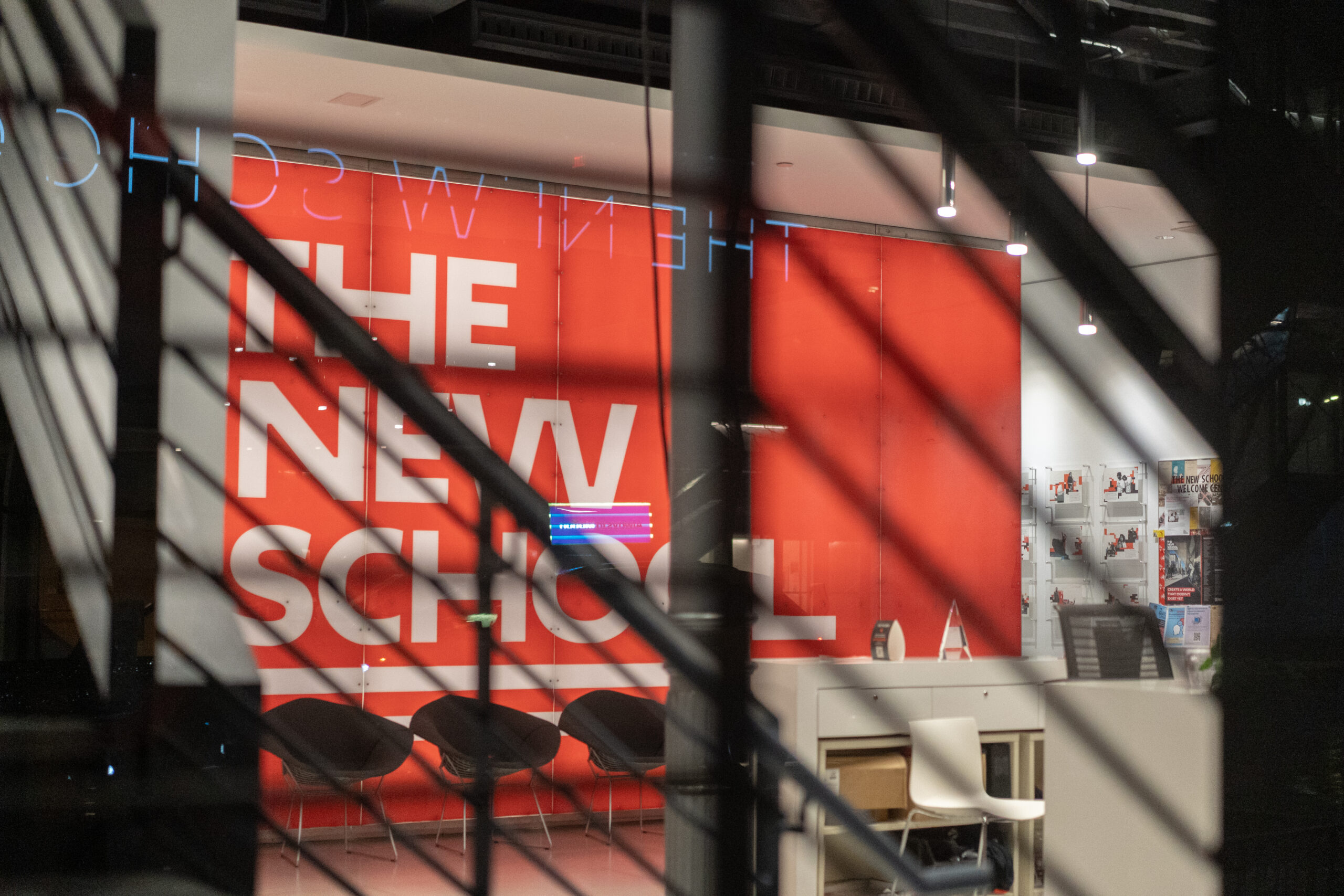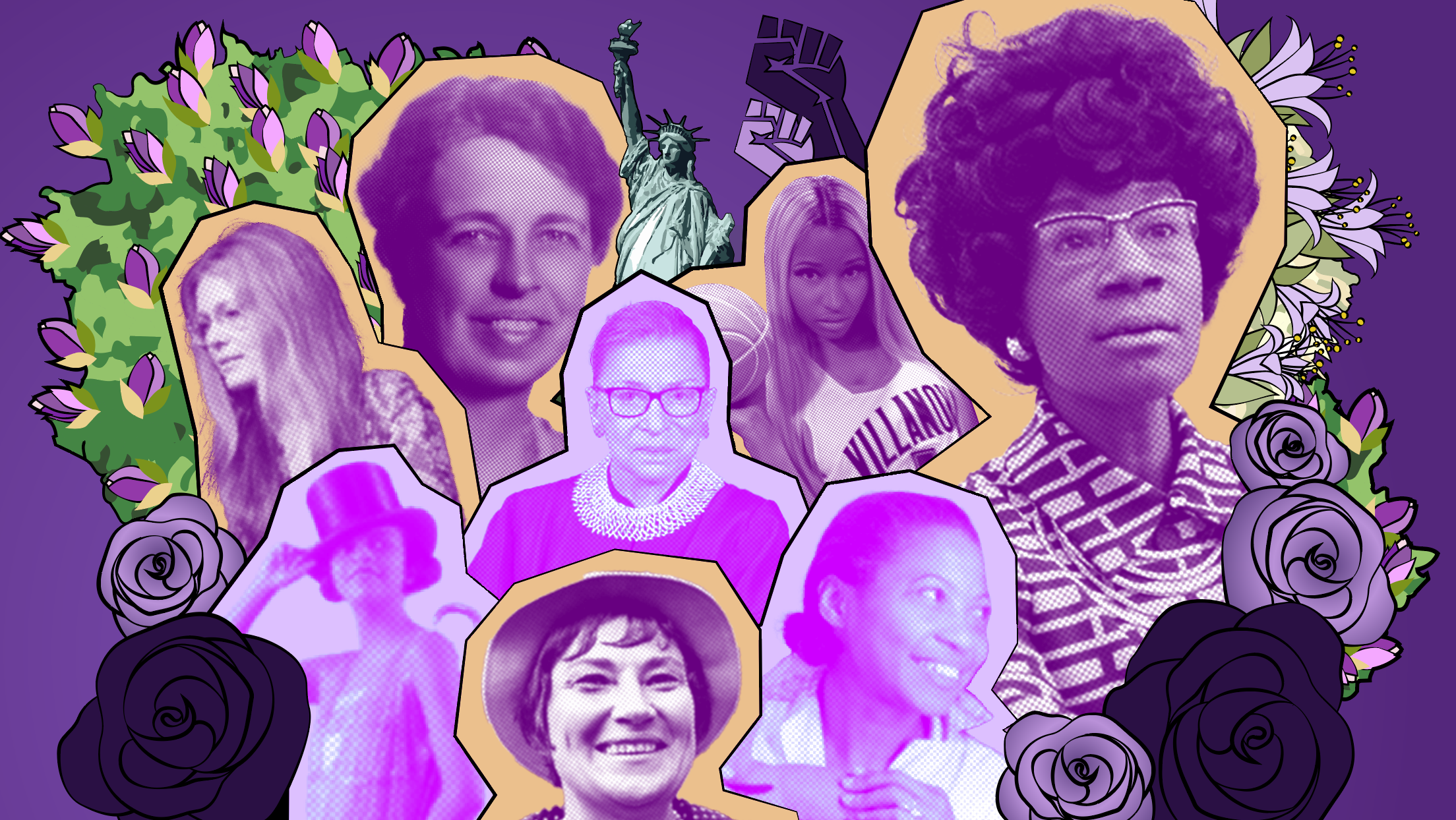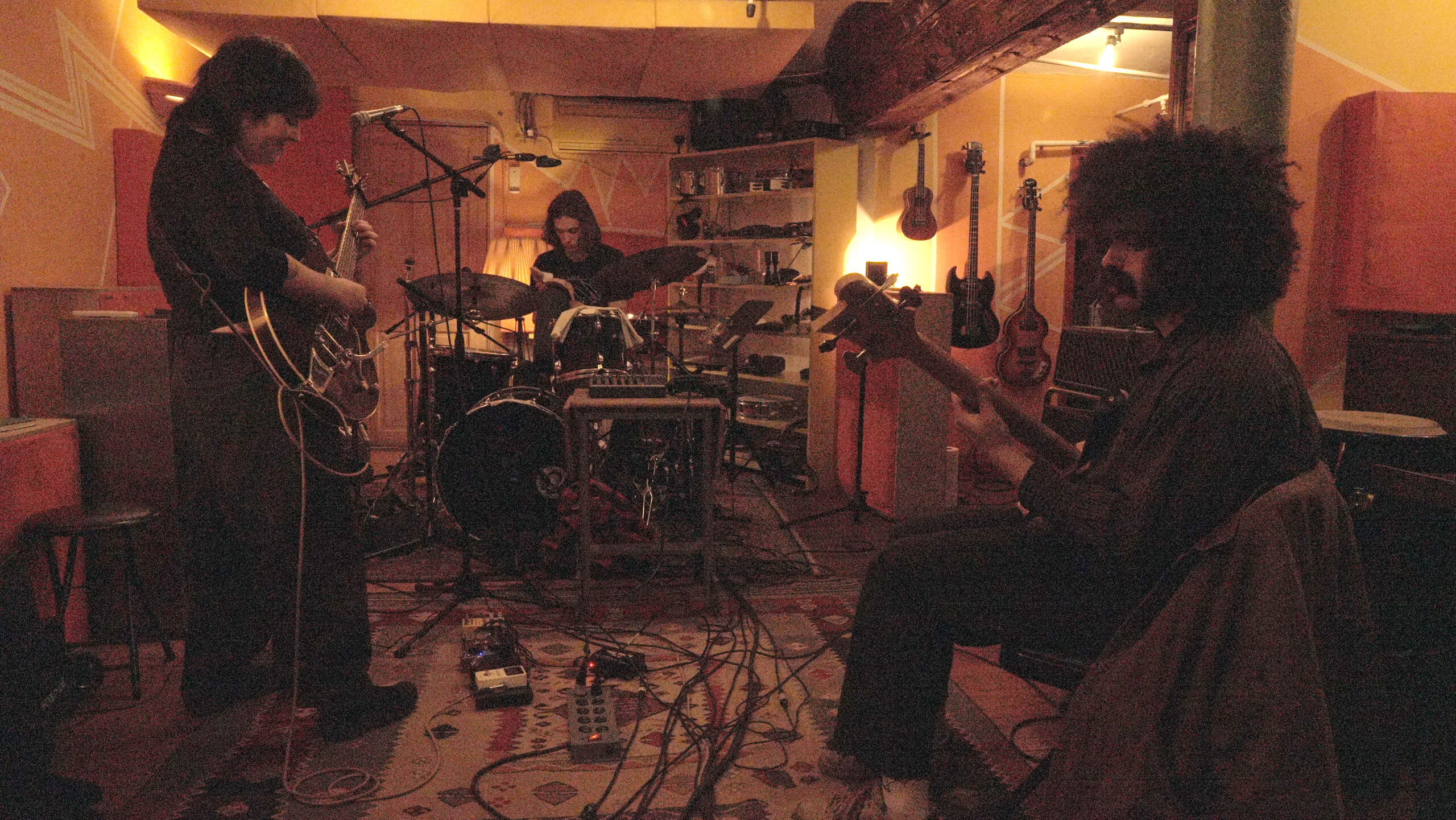
At 1 p.m. on Tuesday, October 30, Parsons student and William Street resident Courtney Boyer heard a knock on her door. It was her residence advisor; Hurricane Sandy, which had already cut off the building’s power, was flooding the basement. Facilities personnel had tried removing the water with diesel-fueled pumps, but doing so caused the building to reek of fumes. New School housing authorities feared more extensive damage, the R.A. told Boyer. All residents of the dorm, which accommodates New School students as well as several dozen Pace University students, had to evacuate by the end of the afternoon. That same R.A. returned fifteen minutes later; it turned out Boyer and her fellow residents had only 60 minutes to leave the building.
Boyer was one of thousands of New School students forced to cope with the impact of Hurricane Sandy in New York City. As the university shut down for over a week, students, faculty and staff scrambled in the wake of The New School’s largest crisis since September 11, 2001.
After hastily filling a bag with clothing and toiletries, Boyer joined her fellow building residents and walked five blocks to One Pace Plaza. Although the rain had subsided a bit, puddles of water six inches deep blocked her path. She was hungry; her clothes were damp and cold. Residence advisors told students that the Pace University-owned facility, running on a backup generator, would provide her and all other William Street residents with shelter, heat, power and food.
According to Boyer, however, Wiliam Street residents found that facilities personnel at One Pace Plaza were only providing meals to Pace University students. She added that as New School students were escorted to the building’s gymnasium, which served as their sleeping quarters, they were denied blankets, sheets and pillows. Some students used nearby coats, bags and towels to build makeshift beds. But resources were scarce, forcing others to sleep on the floor.
Boyer heard a rumor that The New School’s Arnhold Hall — at 55 W. 13th St., over 30 blocks away — was providing all New School students with food, shelter and electricity. Without internet or phone service, she relied on word from a William Street residence advisor, who told her that tenants were not allowed to go there. So she and her friends decided to stay at One Pace Plaza, where they spent their Tuesday night.
“We were all told when we got there that Pace only had enough food for Pace students,” said Boyer. “Even though they were making dinner announcements, [The New School’s] William Street residents couldn’t go. The situation was not one that I could have handled for more than one night.”
The next day, Boyer’s boyfriend arranged for a ride to take them both to his aunt’s home in Syosset, Long Island, 45 miles away. There, they found electricity, food and suburban calm. Had Boyer received an administrative memo that day regarding Arnhold Hall’s availability to New School students, she said she would have gone there rather than trekking out to Long Island.
“The process could have gone much smoother,” Will Carter, a William Street R.A., told the Free Press on October 31. “But given the amount of residents, that was very difficult to do.”
*****
Three days earlier, in the early morning hours of Sunday, October 28, New School President David Van Zandt sat in a wind-battered plane on the LaGuardia Airport tarmac. After a weekend with his son, a student at Ohio’s Wooster College, Van Zandt was back in New York.
At that point, The New School administration had planned no mandatory evacuations. “We wanted everyone to button down and stay in the dorms for the night,” Van Zandt told the Free Press. “We weren’t sure what the storm was going to do.”
Van Zandt phoned The New School’s Senior Vice President for Student Services, Linda Reimer, to start preparing for the storm. Every few minutes during her conversation with Van Zandt, Reimer lost cell phone service. But she soon found a spot in the middle of the Thirteenth Street sidewalk where she could continue speaking with the president.
“We’ve learned a lot of lessons about emergency preparedness over the years, going back since 9/11,” Reimer told the Free Press. “We didn’t know how massive it would be, but we got right to the prep work.”
New School officials decided to open Arnhold Hall as the university’s nucleus. The building is equipped with landline access to the city’s Office of Emergency Management. Until the University Center at 65 Fifth Avenue opens in Fall 2013, Arnhold Hall will remain The New School’s only student facility housing its own generator.
By the time most of Lower Manhattan’s power went out on Monday evening, over 100 students — from both The New School and Yeshiva University’s Benjamin N. Cardozo School of Law — had already flocked to Arnhold Hall. They were armed with phone and laptop chargers, pillows, blankets and board games. Culinary services provider Chartwells served sushi and garden salad in the building’s lobby, stockpiling enough food and beverages into a refrigerator to last them roughly seven days.
“I’m proud of what we’ve been able to provide,” Heath Braunstein, Chartwells’ director of dining services, told the Free Press on October 31. “Whoever has come here wanting food, we have what they need.”
Facilities personnel tied down the university’s red flags to prevent them from blowing away. At the carpeted Theresa Lang Center, located on the second floor, they offered tired students pillows and blankets. The office also ordered enough gasoline to fuel the university’s sole generator for about six days.
*****
By Tuesday, October 30, the storm had passed. But the citywide destruction and blackout lingered, and maintenance workers from Lower Manhattan’s largest university, New York University, began turning away those not affiliated with their institutions. New School students can typically access NYU’s Elmer Holmes Bobst Library, which operated on a generator throughout the week. But by the time some of them walked to the Washington Square library seeking electricity and food, NYU administrators had already stopped accommodating outside students, according to Reimer.
Meanwhile, Reimer had spoken with Pace housing director Patrick Roger-Gordon, who agreed to shelter over 100 New School students stranded at William Street, only a few blocks away.
“Everybody had this expectation that [the blackout] was only going to be a few hours,” said Reimer. “Staying at Pace would give students that proximity.”
But on early Wednesday, October 31, New School students at One Pace Plaza began expressing displeasure with services there. William Street resident and Parsons MFA student Sophie Kaars Sijpesteijn wanted to email relatives in the Netherlands to assure them she was unharmed. In order to do so, however, she needed to access Pace’s password-protected wi-fi system. She approached numerous students, asking them for their user information. She was rejected each time.
“No Pace students would share passwords or let me borrow their laptops for even a moment,” said Sijpesteijn.
Roger-Gordon, however, denied any such occurrence of Pace officials refusing amenities — including food, blankets and pillows — to New School students. “Not one person has been able to validate this claim,” he told the Free Press. “I do not believe it happened.” Other Pace personnel contested the claims, as well.
“All students were fed for free three times a day: breakfast, lunch, dinner,” said Michael Bloom, a Pace University student and William Street R.A. “And all food was provided by Pace.”
By that point, however, New School administrators had heard numerous complaints from their students at One Pace Plaza. In response, university senior personnel reiterated the availability of Arnhold Hall to all New School students in need. Some William Street residents stranded at Pace walked over 2.5 miles to the building, while others rode cabs. In lieu of working streetlights, police guided traffic.
Van Zandt, whose Eleventh Street presidential townhouse had also lost power, spent much of his week at Arnhold Hall as well. He charged his phone, played a few rounds of Scrabble and worked on a jigsaw puzzle with students there.
“That ground floor was where everybody congregated,” said Van Zandt. “It was our central post.”
By Wednesday, the city’s universities announced their plans for the rest of the week. While Columbia University reopened its campus that morning, NYU chose to cancel classes through Sunday. The New School, meanwhile, awaited word from the office of Chancellor Dennis Walcott of the New York City Department of Education. Once Walcott announced that public schools would not reopen until the following Monday, university administrators followed suit.
“It gave people the ability to plan,” Reimer said. “Students who had a way of getting outside the city wouldn’t feel afraid to do it.”
Despite the university’s closure, administrators chose to still pay employees — including students on Federal Work Study — regardless of the storm’s impact on their attendance.
“This was a very thoughtful response,” said University Student Senate co-chair Jens Astrup, who, along with fellow chairs Katherine Towell and Tavish Gallagher, maintained communication with Van Zandt throughout the week. “The lives of many in the community were already disrupted enough without having to deal with a week without income.”
By the time the Metropolitan Transportation Authority restored parts of its subway system on Friday, November 2, two more university buildings — Parsons’ Schwartz Fashion Education Center at 560 Seventh Ave. and Mannes’ facility at 150 W. 85th St. — began admitting students seeking an alternative to Arnhold Hall.
“It was a matter of waiting for mass transit to be restored,” Van Zandt said. “Once parts of it came back, we could accommodate students in other facilities.”
New School facilities director Thomas Whalen said that the next time a severe storm approaches the city, effort to prepare the university will likely begin once meteorologists include it in their forecasts.
“What we probably should have done is bring staff in earlier, have them stay in the course of the storm and be here,” said Whalen. “The big problem wasn’t availability; it was just getting them here.”
*****
Roughly 1,500 miles away in Yukon, Oklahoma, Courtney Boyer’s mother, Debbie, eagerly watched the television, her telephone nearby. It took her daughter nearly half a day to get that Tuesday ride out of New York City and reach an area with consistent cellular reception. Finally, they exchanged text messages and calls. Courtney was safe.
“The hurricane was very stressful,” said Debbie Boyer. “Living so far away and not being able to get to your children in times when you know they need you is a parent’s worst nightmare.”
Boyer is one of many parents of New School students who have written to the university, asking it to inform parents during future emergencies — particularly those in which blackouts or other factors hinder student communication.
“We assumed that parents were getting information from their sons and daughters,” Reimer said. “I think that was true in many cases, but not all. We are now looking into enhancing how we communicate with parents.”
To improve on the university’s emergency response system, Van Zandt suggested that The New School will build a wider database of student emergency contacts. This would allow the parents and family members of New School students to better track developments concerning their loved ones.
“We haven’t collected parent contact information as widely as I’d like,” Van Zandt said. “I think we are going to do that.”
William Street Residence Hall, which The New School will vacate at the end of the 2012-13 academic year, is one of the university’s only facilities not located in Greenwich Village. As such, Courtney Boyer said residents felt left behind and closed off from administrative decisions.
“I was hearing so many different things from different people,” she said. “They should have been more honest with how unprepared they were for this kind of storm.”
Despite perhaps inevitable criticisms of The New School’s post-hurricane response, Van Zandt said he was pleased with the university’s efforts all the way through the moment Con Edison began restoring power to Lower Manhattan on Saturday, November 4.
“People were surely anxious, but the calm reaction was amazing,” he told the Free Press. “I can’t speak for everyone, but that seemed to be the case.”
With reporting by NSFP Staff








Leave a Reply